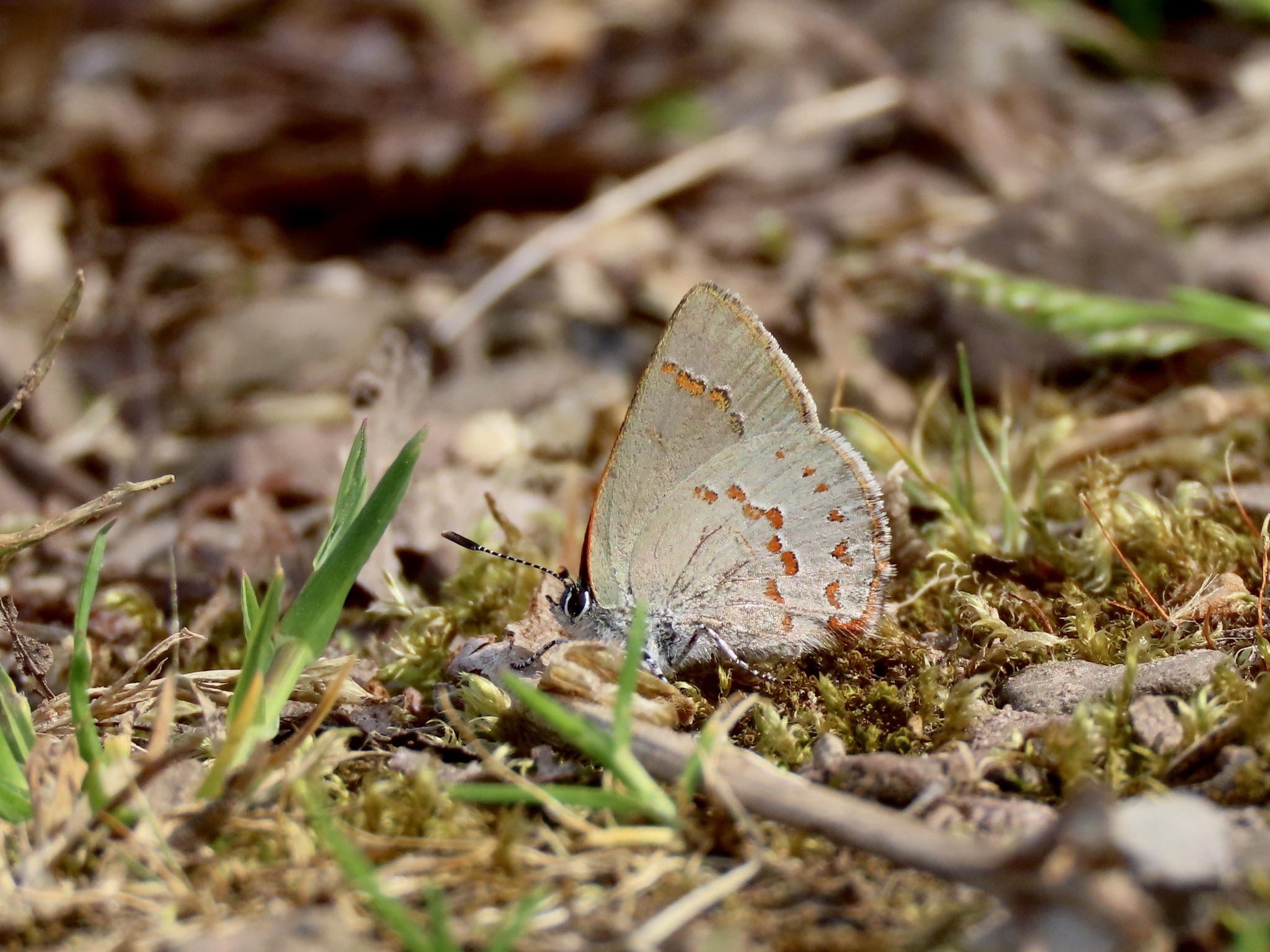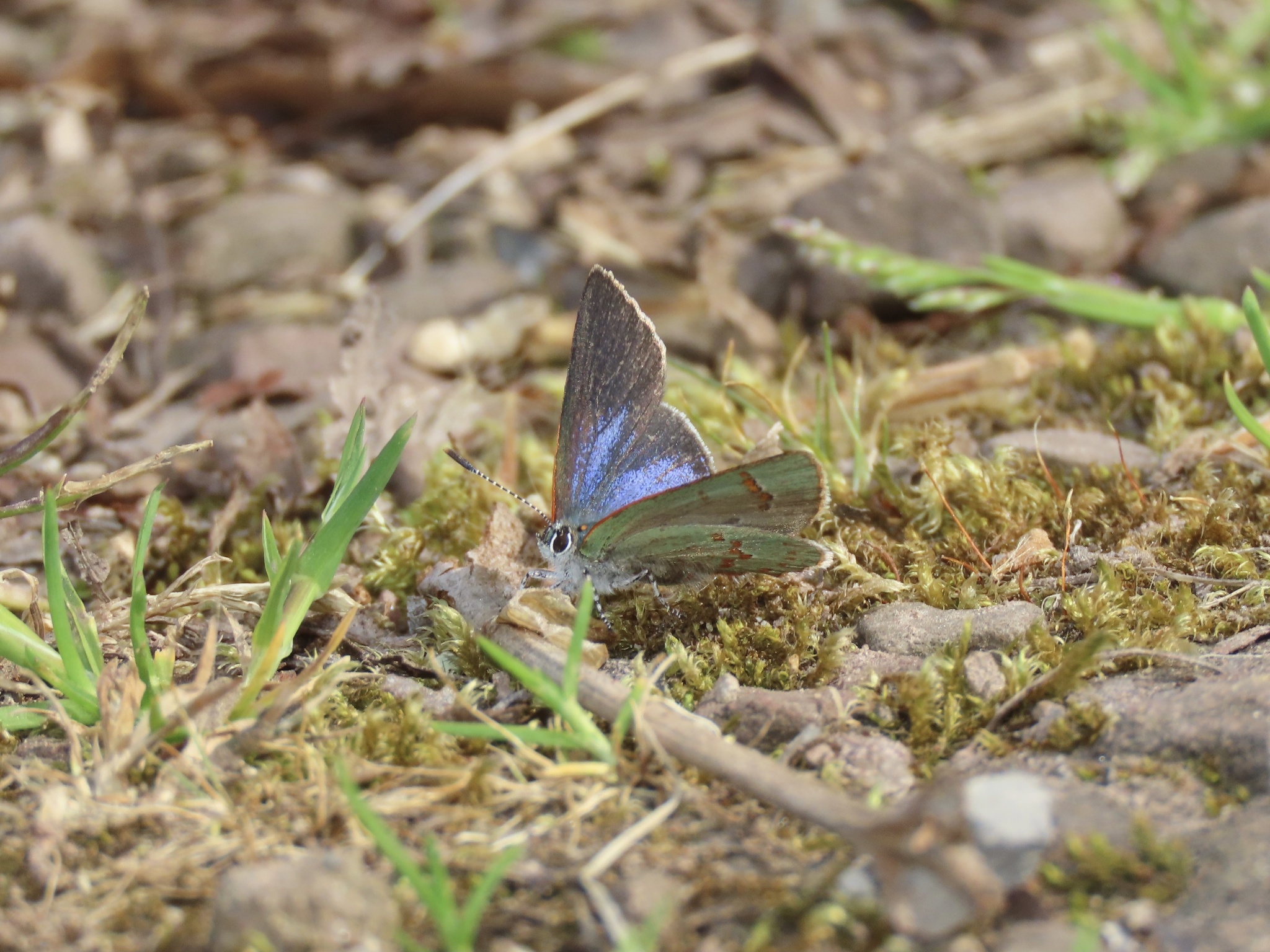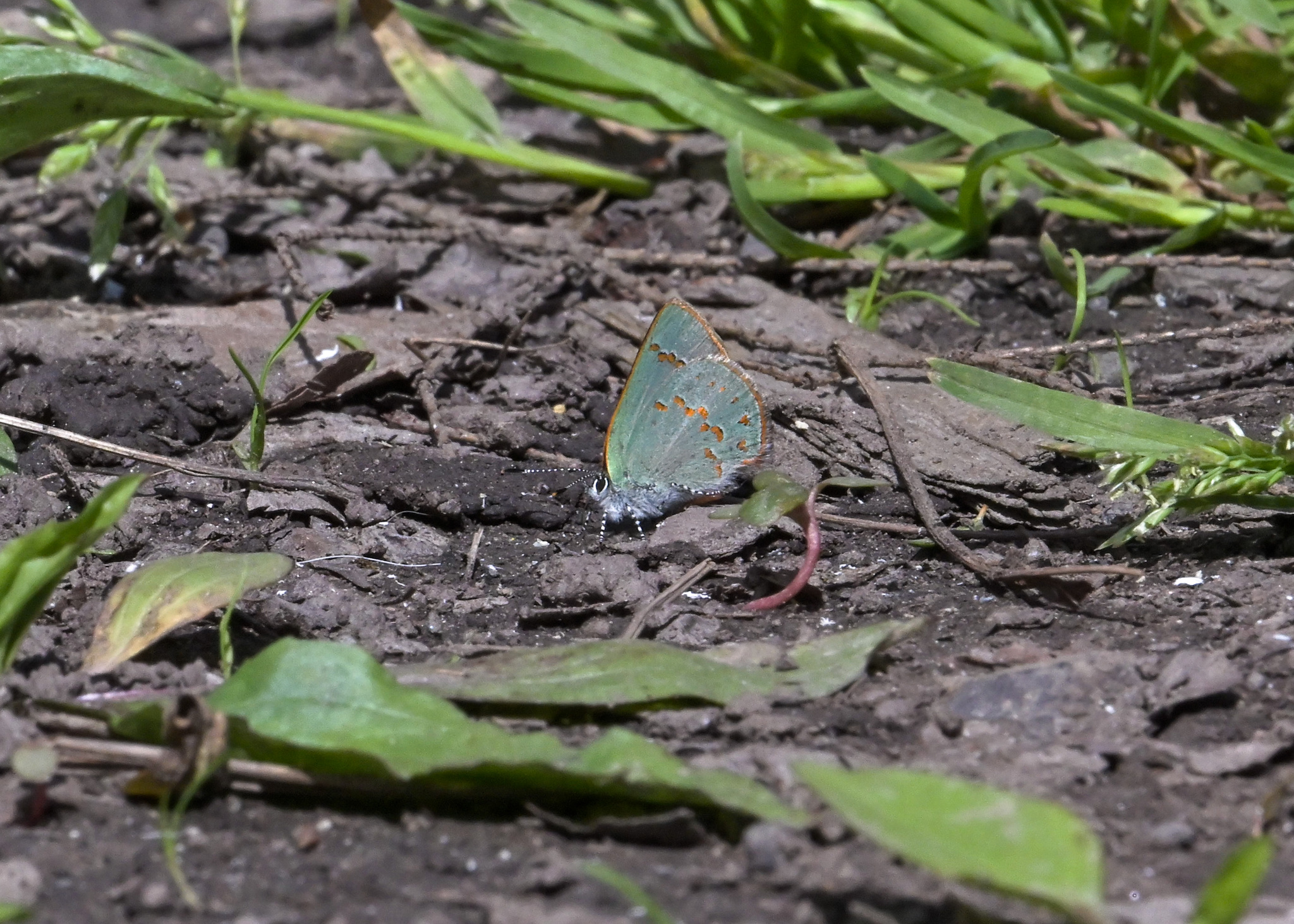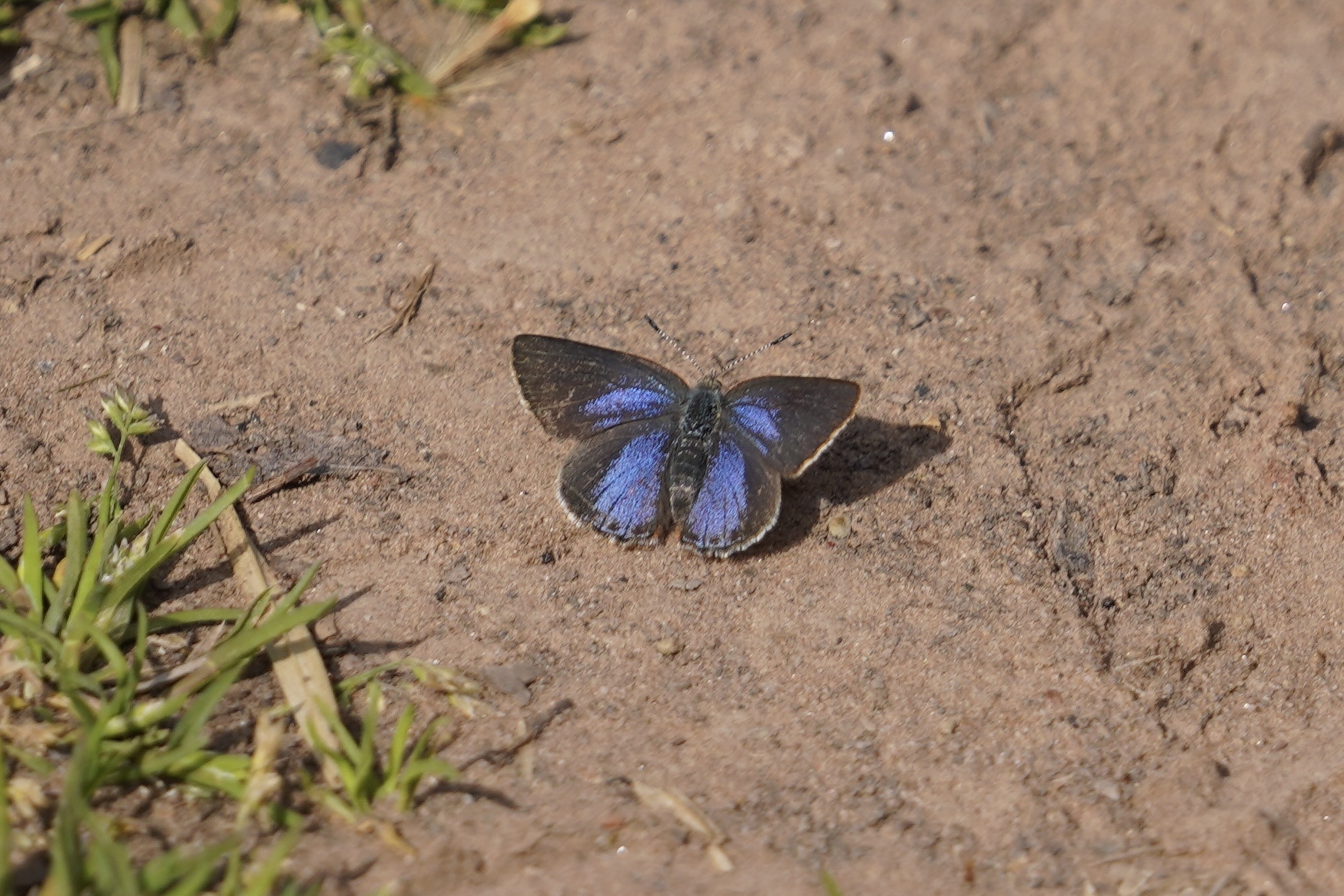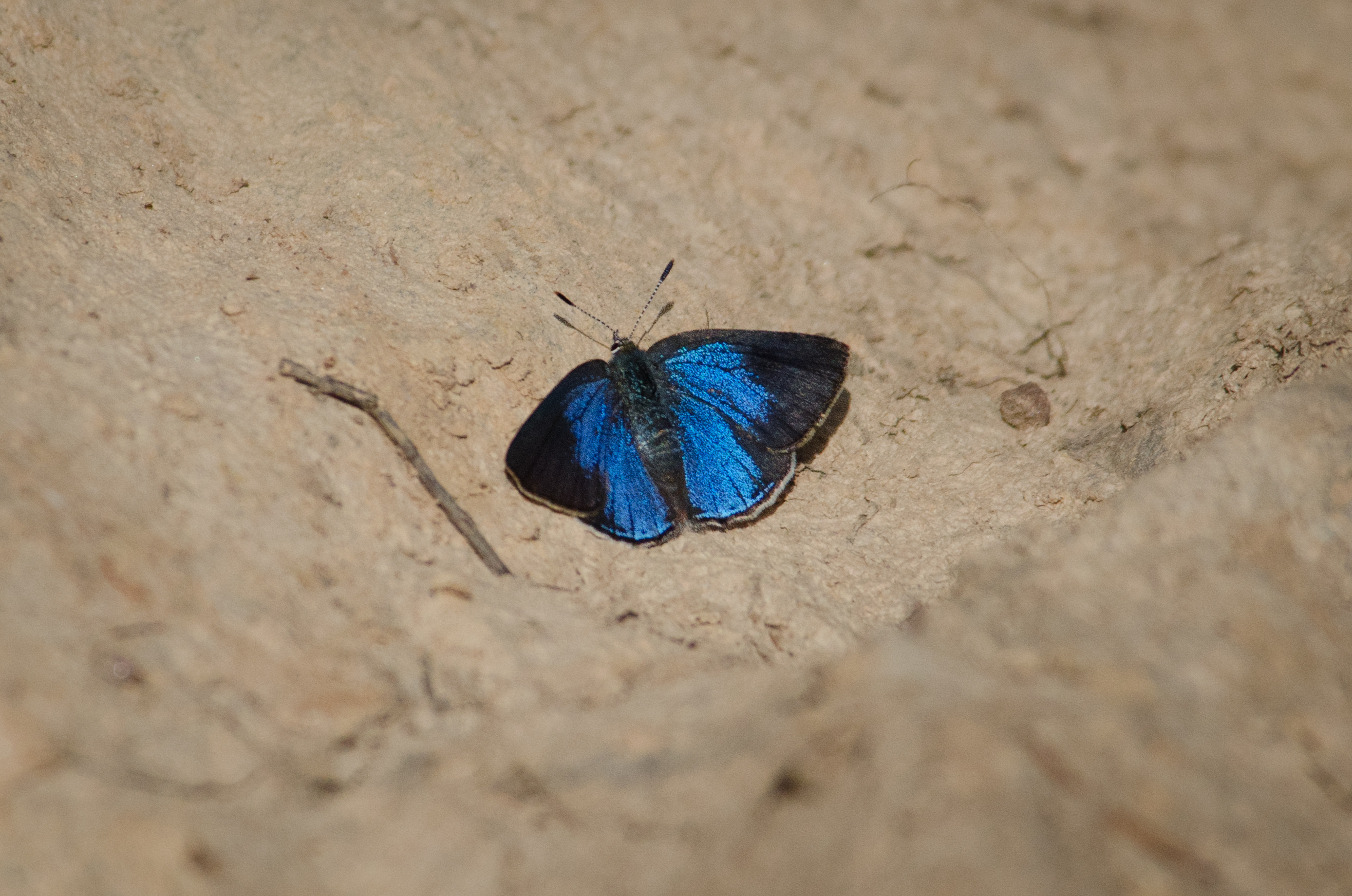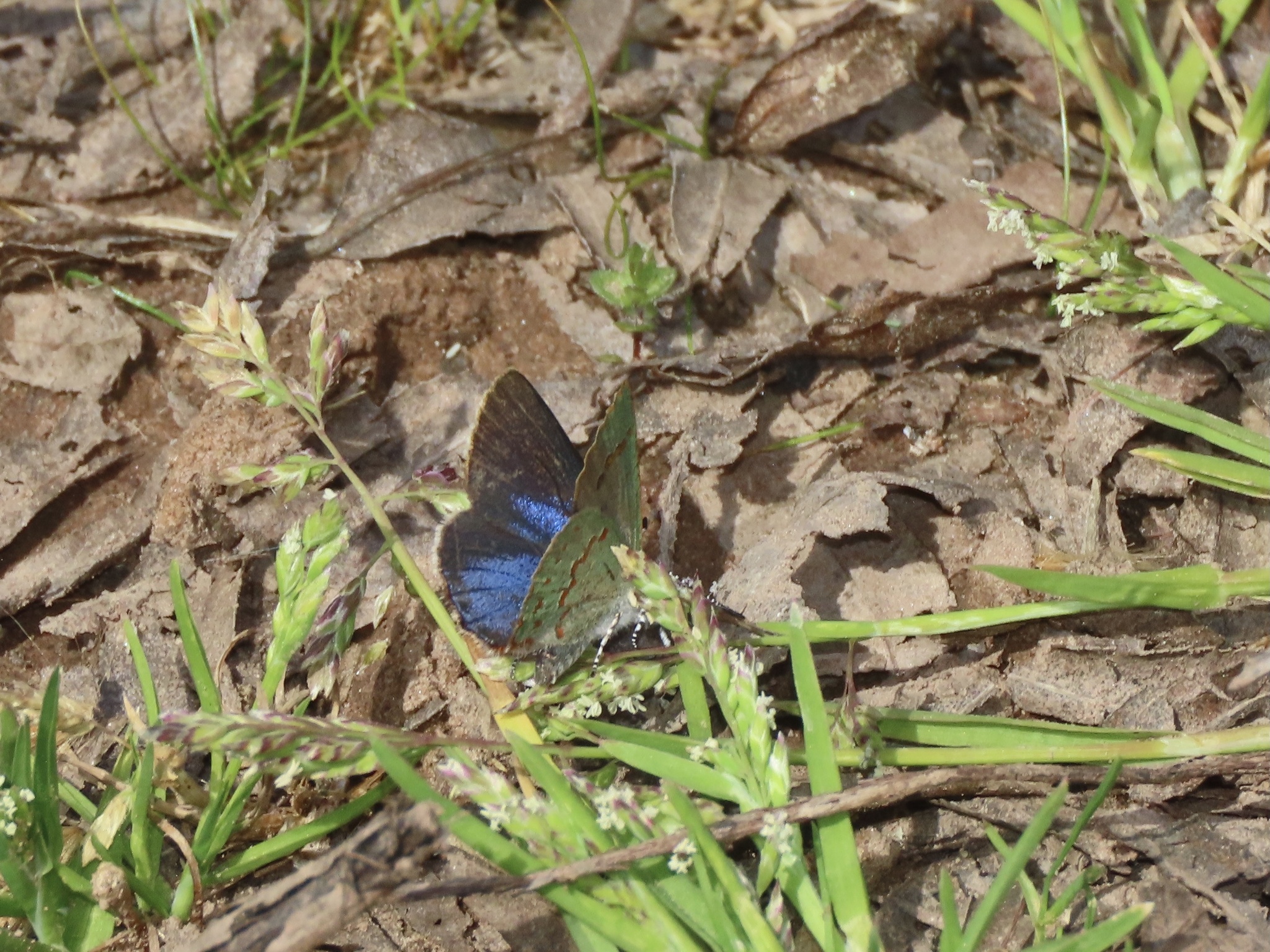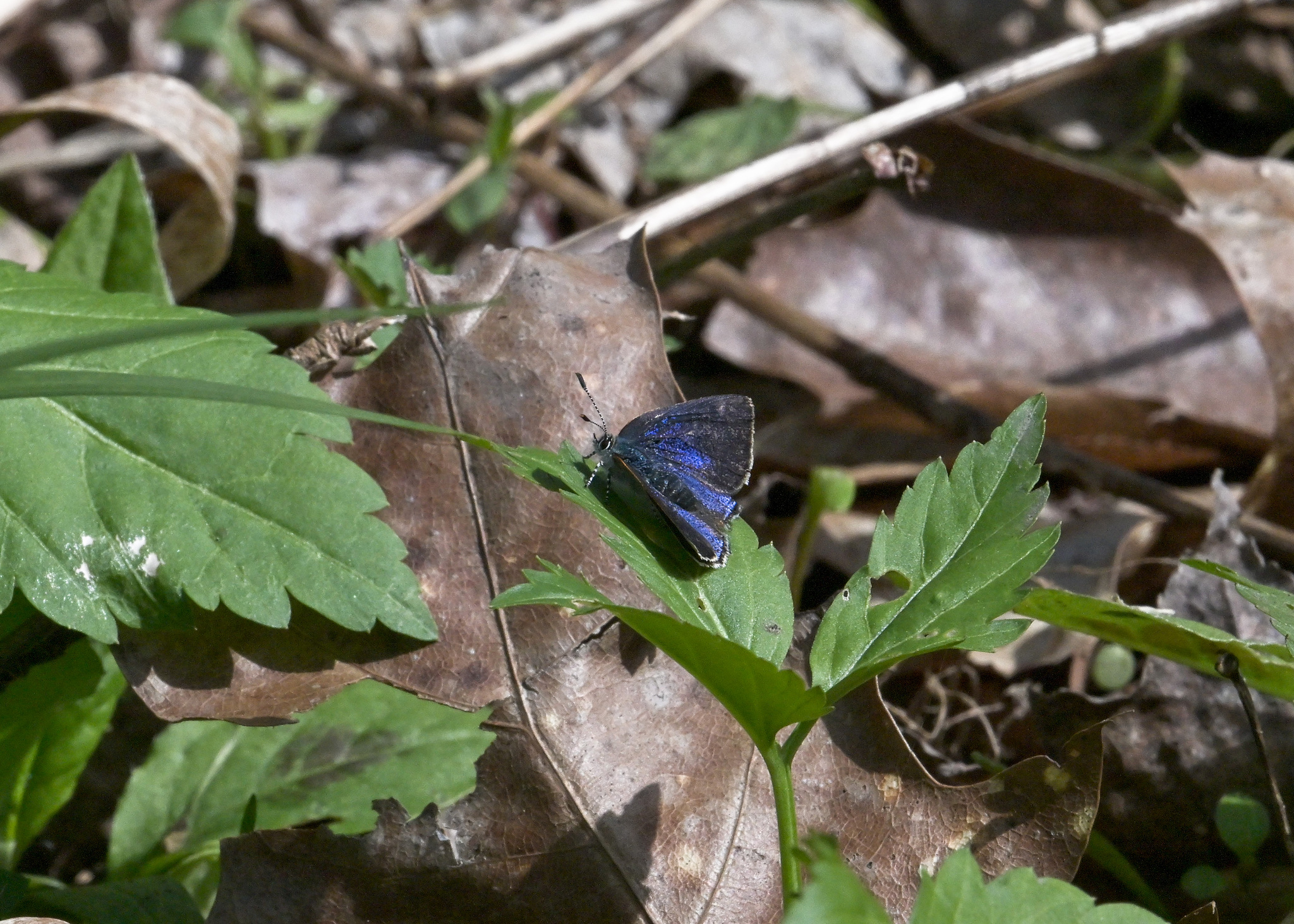Map Snapshot




12 Records
Status
The elusive and seldom-encountered Early Hairstreak (Erora laeta) is a small and poorly-understood butterfly. It is thought to spend most of its time within the canopy of mature trees, and consequently, is seldom encountered by the average terrestrial lepidopterist. Males are prone to hilltopping behavior. Due to the apparent rarity, this species is considered endangered in Maryland, with a state rank of S1 (highly-state-rare). Early Hairstreak has two broods in Maryland, flying in late April, and again in early July (Butterflies of Maryland: A Biological Summary and Checklist by Lynn Davidson & Richard Smith).
Where To Find
Generally frequents canopy of deciduous forest. May occasionally be seen visiting flowers, or puddling along dirt roads through hardwood forest. Males may hilltop in treetops to seek females (Brock & Kaufman, 2003).
Relationships
Uses developing fruits of American Beech (Fagus grandifolia) and hazelnuts (Corylus) as larval hosts. In West Virginia, apparently will also use birch catkins or galls in second brood (Allen, 1997).
Seasonality Snapshot
Source: Wikipedia
| Erora laeta | |
|---|---|

| |
| Scientific classification | |
| Domain: | Eukaryota |
| Kingdom: | Animalia |
| Phylum: | Arthropoda |
| Class: | Insecta |
| Order: | Lepidoptera |
| Family: | Lycaenidae |
| Genus: | Erora |
| Species: | E. laeta
|
| Binomial name | |
| Erora laeta (W.H. Edwards, 1862)
| |

| |
| The range from Erora laeta in West Virginia | |
| Synonyms | |
| |
Erora laeta, the early hairstreak, is a butterfly of the family Lycaenidae. It is found in eastern Canada and the United States.[2][3] The habitat consists of deciduous and mixed woods.
The larvae are associated with American beech (Fagus grandifolia), and possibly also beaked hazelnut (Corylus cornuta).[2] They feed on the leaves and fruits of their host plant.
References
[edit]- ^ "NatureServe Explorer 2.0 Erora laeta Early Hairstreak". explorer.natureserve.org. Retrieved 3 October 2020.
- ^ a b c Erora laeta, Butterflies of Canada
- ^ Erora laeta at Markku Savela's Lepidoptera and Some Other Life Forms

